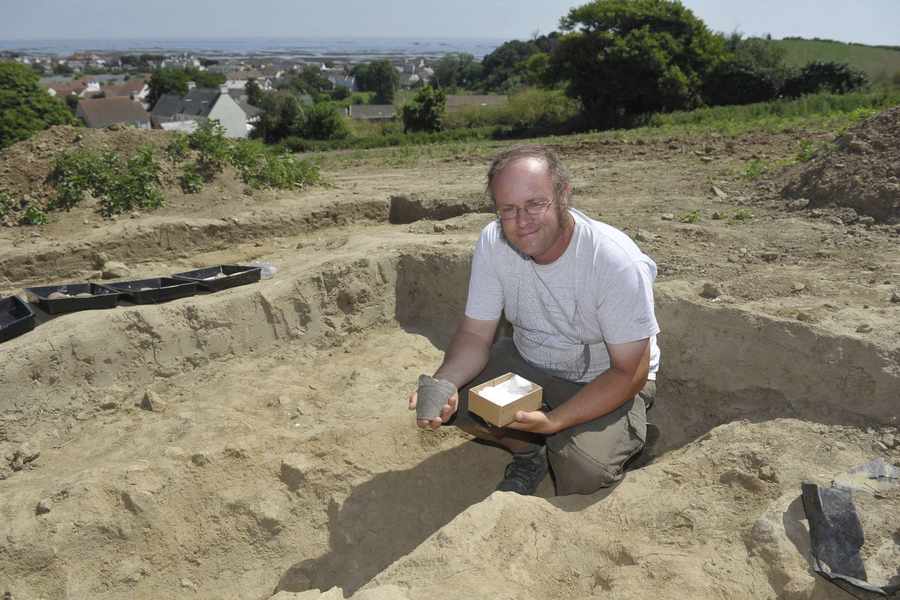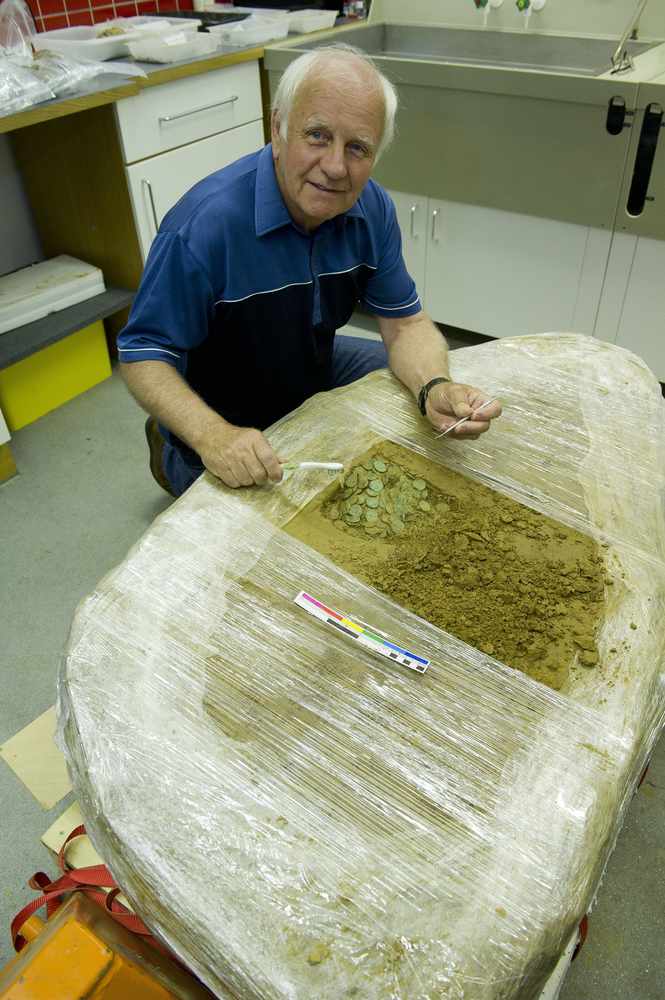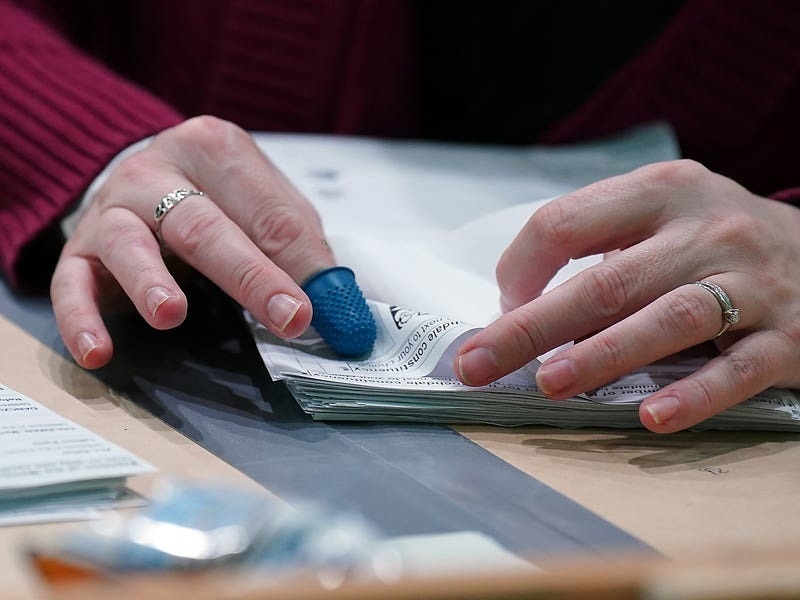Jason Le Monnier found a brass badge from the cap of a soldier belonging to the Army Ordnance Corps – a corps of the British Army which had detachments in Jersey as well as other locations such as Gibraltar, Malta, Bermuda and Canada. The antique is believed to be more than 100 years old.

The 47-year-old, who works in the mail room at the RoyalBank of Scotland, discovered the badge in a grass verge next to Le Braye car park while on a day out with the Mini Club Jersey. He said he pulled over to search for a sticker that had fallen off his friend’s Mini when he found it hidden in the grass.
Robert Waterhouse, field archaeologist for the Société Jersiaise, has been investigating where the badge may have come from and said it dates from between 1896 and 1918.
‘The reason for it being there is very interesting. During the first six months of the First World War there was a bit of concern that the Germans would overrun France and the Channel Islands would be at risk. Quite a lot of soldiers were stationed in the Channel Islands because of the belief that the Germans would try to invade them. St Ouen’s Bay was certainly defended at that time with dug-outs and gun positions, mostly of turf and timber construction, in and behind the dunes.’
Mr Waterhouse explained that the Army Ordnance Corps, who were responsible for supplying areas with military equipment such as ammunition and weaponry, were based at St Peter’s Barracks which used to be near the airport.

‘Their duties may have involved taking guns down to the coast, hence why the badge was found there. Also large areas of the sand dunes in St Ouen’s Bay were owned by the War Office and used for military training and exercises – regular soldiers against the Jersey Militia. So this badge may have come from that.’
Mr Le Monnier, who intends to donate the badge to the Jersey Museum, said he was ‘humbled’ to find the badge but added that there was no chance of him becoming a millionaire from it.

THE rights and responsibilities of people who find buried treasure must be clarified in law to protect the Island’s rich history, said the finder of the largest hoard of Celtic coins ever discovered in 2012.
Just days after the coins were lifted from a field in the east of the Island, Reg Mead called on the States to act as soon as possible.
He wants them to pass a law similar to the 1996 UK Treasure Act.
Under the act, a criminal offence is committed if someone fails to report finding treasure.
Treasure is defined in the act as any objects of at least ten per cent gold or silver by weight and which are at least 300 years old.
There must be at least two gold or silver coins in the find for it to be treasure.
If declared treasure, the items become the property of the Crown and go before the Treasure Valuation Committee at the British Museum to assess their historical significance and value.
If a museum wants the treasure, it is valued and that sum is paid to the finder and/or landowner and/or occupier of land, but they must sort out how it is split between them.
If they cannot agree, the matter goes before a court. If a museum does not want the treasure, it is returned to be split between those three parties.
In 2012 Mr Mead and his detecting partner, Richard Miles, found about 100 ancient coins and planned to use the hoard as a test case to clarify the legal position of finders.
Mr Mead said that he wanted three things to come out of the find. ‘I want it to be recorded, I want it to be conserved and I want it to end up in Jersey, where it should be,’ he said.
‘Secondly, I want all the people involved to get their legal rights because the find has been handled correctly by us as the finders and the landowner.
‘Thirdly, I hope the finding of the hoard prompts the government of this Island to give us, the general public, a Treasure Act that would make it very clear what was required of us when we find something and what our responsibilities are, and what the rewards are if we abide by the rules.
‘That is the only way we are going to save the archaeology of this Island.’






